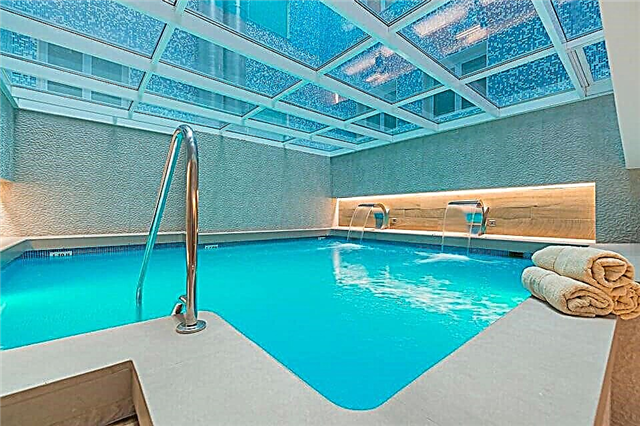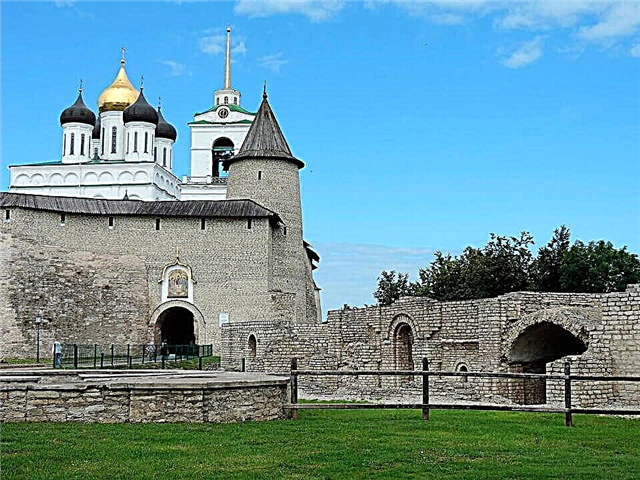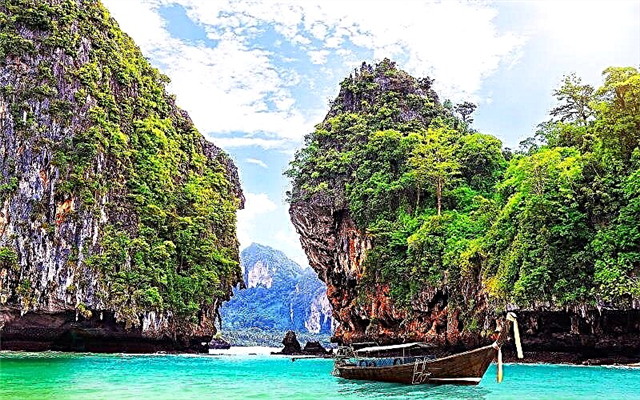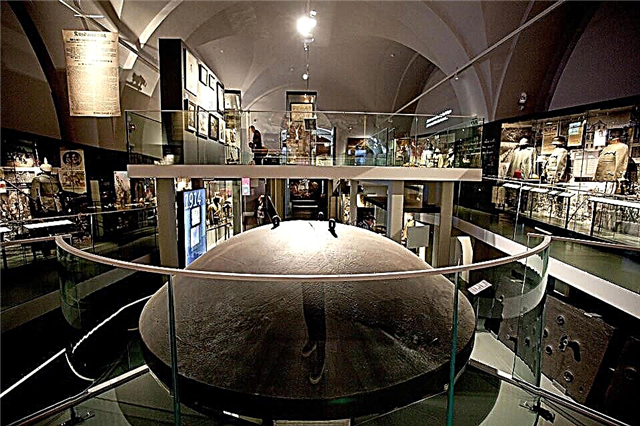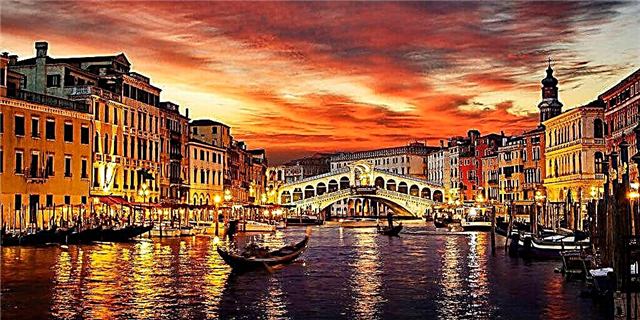Venice is a city on the water, receiving about 16 million tourists annually. The fate of this unique area was determined by its geographical location. The Grand Canal is the main "street" of the city, along which palaces, cathedrals and hotels rise. Buildings built at different times reflect changes in architectural styles over the centuries. All of this embodies a unique cultural heritage and represents the unique historical value of Venice.

History of the Grand Canal
The Grand Canal bears witness to the historical birth and development of Venice. All major events and transformations of the city took place within this water corridor. In the middle of the 4th century AD, the Roman Empire was attacked by the ancient Germanic tribes. Many peoples suffered from the robbers, including the hardworking and tall Veneti who lived on the northern coast of the Adriatic Sea. In search of escape from the invasion of enemies, they were forced to leave their homes and settle in a small settlement on swampy islands, which were washed by a shallow lagoon. The surface of the water served as a reliable barrier in the path of the Germanic newcomers.
The Venets built their dwellings on wooden piles, hammering sharp logs into the solid foundation of the lagoon bottom. Swamp silt covered the supports and thus protected them from decay. This made it possible to keep at home for many years. Since then, the resettlement of wealthy people to these islands began. At their core, they were also refugees seeking salvation from the raids of the Goths. The village gradually grew and turned into a city, the Grand Canal became its main artery. Over time, shipbuilding began to develop rapidly in Venice, which led to the emergence of many commercial enterprises. Economic growth and political environment contributed to the emergence of a state like the Republic of Venice.
In the 10th century, the Grand Canal was already a major market and a major logistics center. Overseas ships moored directly to the houses, which were warehouses for goods from different parts of the world. The merchants quickly enriched themselves, which indicated a sharp increase in the construction of buildings and structures along the canal. The period of the XII-XIII centuries was marked by the transformation of the external appearance of Venice. Houses of marble were erected on the canal, decorated with elongated high arches and wide balconies. The first luxurious buildings appeared. In the following centuries, palaces of various architectural styles were built, such as Byzantine, Gothic, Baroque and Renaissance.
Venice took advantage of its unique geographical position between the Byzantine Empire and the Western world of that era. The territory of the republic has become a hub port linking the economies of Western and Eastern civilizations. The well-being of the Venetians depended largely on maritime trade relations with China, Egypt and India. Excellent seafarers and skilled tradesmen, the people of Venice have transformed the swampy lagoon into an architectural gem of Europe. The Grand Canal was a direct witness to the historical ups and downs of different centuries. The water keeps the memory of the brave sailors and merchants of the Middle Ages, as well as the arrival of Napoleonic, Austro-Hungarian and German residents.
The Grand Canal is a historic artery of Venice
Arriving from mainland Italy, tourists immediately find themselves on the Grand Canal. This is the main waterway that runs through Venice with its curved channel. Historically, the canal is the only and main "road" of the city. Its length is 4 km, and its width reaches from 30 to 70 meters. The Venetians live as if in another world. On the streets you will not find traffic lights and highways with numerous intersections.
Venice consists of six districts adjacent to a large canal, one end of which leads into the lagoon to the train station, and the other side flows into the Adriatic Sea. The quarters of the city are connected by four bridges over the Grand Canal. Each bridge has its own name: Rialto, Scalcius, Academics and Constitutions. Tourists will certainly swim under each of them. The most famous bridge in the city is the Rialto. This single-span arched structure was built in the 16th century and was the only pedestrian crossing for several centuries.
Decorated with marble bas-reliefs and carved columns, the bridge stands out harmoniously against the backdrop of historical architectural structures. The first ships, delivering goods from the countries of the East, passed under the eight-meter height of the Rialto. On the bridge itself, 22 meters wide, there were shopping arcades. The Rialto is a strategically important site in modern Venice. A drinking and gas pipeline is installed inside the bridge structure.
Canal attractions in Venice
The main attractions of the city are located on the Grand Canal of Venice. The wonders of architecture were mainly erected in the XIII-XVIII centuries. It is amazing that the modern city was able to preserve the appearance of magnificent palaces in its original state. Today, the large halls and apartments of the exquisite palazzo are museums, art galleries, libraries, hotels and casinos.
Traveling along the Grand Canal, tourists are amazed at the abundance of unique buildings. Here you can see examples of the classic Gothic style. They are characterized by high pointed arches and thin numerous columns. The façade of the Cadoro house is especially beautiful. Its walls are decorated with carved balconies and mosaic panels. The Sagredo Palace is located nearby. It recreates the atmosphere of medieval Venice, combining the charm and harmony of the architectural style of the time. The grandiose Doge's castle surprises with its multi-colored marble cladding and unusual arches resting on columns. In the center of the building there is a large balcony surrounded by sculptures. The facade is crowned with white stone battlements. This palace was the residence of the Venetian rulers - the Doges.

One of the oldest sites is the Fondaco dei Turchi castle. This three-storey Byzantine-style building was built in the first half of the 13th century. It belonged to Turkish merchants who used huge loggias as a warehouse for their goods. Ships with cargo were moored directly to the basement. The façade of the palazzo consists of two side towers connected by two rows of arches with columns. The attic gapes with loopholes.

The palaces of Dario and Grimani are striking masterpieces of the Renaissance. Both buildings are faced with colored marble and decorated with wide arches. The Palazzio Calegri is considered a classic Renaissance building, embodying the proportionality and beauty of the architectural elements of the facade. Large arches of window openings and decorative finishes lend elegance to the architectural masterpiece. This house was once home to the German composer Richard Wagner.

The Cathedral of Santa Maria dominates the Grand Canal. The structure is crowned with two domes, raised in the center of the octahedral structure, which is surrounded by high arches. The church was built in the 17th century in gratitude to the saints for saving people from the plague. The chapel of San Simeone Picolo is worthy of special attention. The religious landmark looks like a copper dome lying on massive columns. A wide front staircase leads to the entrance to the sanctuary directly from the water of the canal. Lovers of modern painting, as well as connoisseurs of Asian art, will be interested in visiting the marble palace of Capezaro.This building was built in the 18th century in the Venetian Baroque style and is today an international gallery and museum.
How to navigate the channel
Water transport is the main and only means of transportation on the great canal of Venice. Pleasure diesel boats of various sizes are very popular among tourists. They are called vaporettos. The Venetian public "bus" runs on routes linking the airport and train station to the central part of the Grand Canal.

It's hard to imagine Venice without gondolas. This transport is considered the most desirable for tourists. The oarlock, where the paddle is inserted, allows the gondolier to masterly maneuver around the waters of the Grand Canal. Many residents, guests of the city, as well as municipal services (police, firefighters, doctors) use boats and boats.





